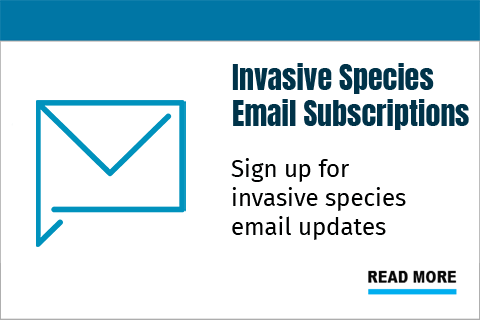Purple loosestrife biocontrol — and you
Purple loosestrife (Lythrum salicaria) is a flowering plant that can reach 3’-7’ tall and is listed as a Restricted Invasive Species in Wisconsin because of its history of causing negative ecological impacts to wetlands and shorelines. Extensive populations of the plants that were found throughout the state by the latter half of the 1900s have been brought down to a manageable level in most areas thanks to tiny beetles and the people who rear and release them where needed.
- Check out the purple loosestrife (Lythrum salicaria) fact sheet.
- Learn about purple loosestrife identification and management.
- Learn about approved purple loosestrife biocontrol species.
Wisconsin DNR has been using four insects from Europe to control purple loosestrife since 1994. Careful research has shown that all four control species, referred to as biological agents, do not threaten native plants or cause other issues. For example, they do not overwinter in our homes. The process is classic biocontrol, and it is likely the best long-term control for purple loosestrife, reducing the need for other more costly and disruptive methods, such as herbicides or large-scale digging.
Two "Cella" beetle species (Galerucella calmariensis and G. pusilla) provide highly effective control by feeding on leaves and shoots. A root-boring weevil, Hylobius transversovittatus, can be effective but is difficult to monitor for success. A second weevil, Nanophyes marmoratus, feeds primarily on the flowers, reducing the amount of seed the plants can produce. It appears to have naturalized in some locations since being released in the early years of the three-decade biocontrol program.
Though elimination is rare, biocontrol offers effective and environmentally sound control of the plant without herbicides. The Galerucella sp. beetles are easy to rear, place where they are needed and will spread to new locations on their own. They successfully decrease the vigor, size and seed output of purple loosestrife, allowing native plants to grow and compete. The purple loosestrife that remains can provide some benefits to pollinators when it is not eradicated. Keeping some of the plants in the landscape is also important for maintaining healthy populations of beetles for ongoing purple loosestrife management. Successful biocontrol typically ranges from one to several years, depending on such factors as a site’s size and the purple loosestrife’s density. Once purple loosestrife is well managed or removed, it’s important to prevent new invasive species from spreading into the open space. Native species or their seeds may not be present or abundant, so consider adding native plants to your sites.
Wisconsin's Efforts to Control Purple Loosestrife
Since 1997, over a thousand people across the state have shared in the fun of rearing beetles and releasing them into local purple loosestrife populations in wetlands, lake and river shorelines, and ditches. Some folks have participated for over 20 years! There are several ways to help. The training videos below provide an overview of the program and describe the activities needed to be successful. Most projects are coordinated through a County’s Aquatic Invasive Species (AIS) Coordinator or other local program leaders. Find the contact information for your County AIS Coordinator and the WDNR Regional AIS Biologists on our Aquatic Invasive Species contacts page.
Important to remember: A permit is required because the process involves moving a WI-restricted invasive species from one location to another. The application can be found below in the Forms section.
Because Galerucella sp. beetles are now naturalized throughout Wisconsin, the DNR does not provide the parent beetles for rearing or release. This is not clearly stated in the current version of the program application. However, County AIS Coordinators and the Statewide Coordinator can assist in finding parent beetles in most cases. Collecting the beetles is what many people enjoy the most.“Collecting Beetles” is one of the training videos below.
Training
- Purple Loosestrife Biocontrol Program Overview and Instructions guide.
- Volunteer and staff job descriptions for beetle rearing and release.
- Check out the biocontrol program quick guide filled with pictures and the most important how-to information.
- This chart can help you determine what method or combination of methods make the most sense for your site: Integrated Pest Management for Purple Loosestrife, including Biocontrol.
- Video Training Series:
- Purple Loosestrife Biocontrol Program Overview (21 minutes)
- Digging, Potting, and Care of Your Plants (19 minutes)
- Preparing Your Netting (5 minutes)
- Making a Beetle Trap (4 minutes)
- Collecting Beetles (17 minutes)
- Winter Monitoring (8 minutes)
Forms
- To join the program, download and complete this application to send it to the address below.
- To report beetle release, download and complete the Purple loosestrife Beetle Release Form.
- To assess beetle activity at newly found and previously managed purple loosestrife patches, download and complete the Purple loosestrife Beetle Presence and Activity Report Form.
Note: Many current browsers do not open PDF files automatically. If you experience trouble opening or filling out a PDF form, visit the DNR PDF help for instructions on how to open PDF files successfully.
Educational materials for students
- See Cella Chow! Here you’ll find lesson plans for grades 6-12 built around the science of biocontrol, specifically purple loosestrife. The lessons include a listing of the related Wisconsin Model Environmental Education and Science Standards.
Purple loosestrife is here to stay in Wisconsin, but you can encourage it to “play nice” with native plants by reuniting it locally with its natural predators. As biocontrol reduces purple loosestrife, you can experience even more satisfaction by helping to restore any native plants that may have been crowded out, further ensuring diverse, healthy wetlands!
For more information
Find the contact information for your County AIS Coordinator and the WDNR Regional AIS Biologists on our Aquatic Invasive Species contacts page. Additionally, you may email DNRAISinfo@wisconsin.gov and our staff can direct you to the correct contact.

